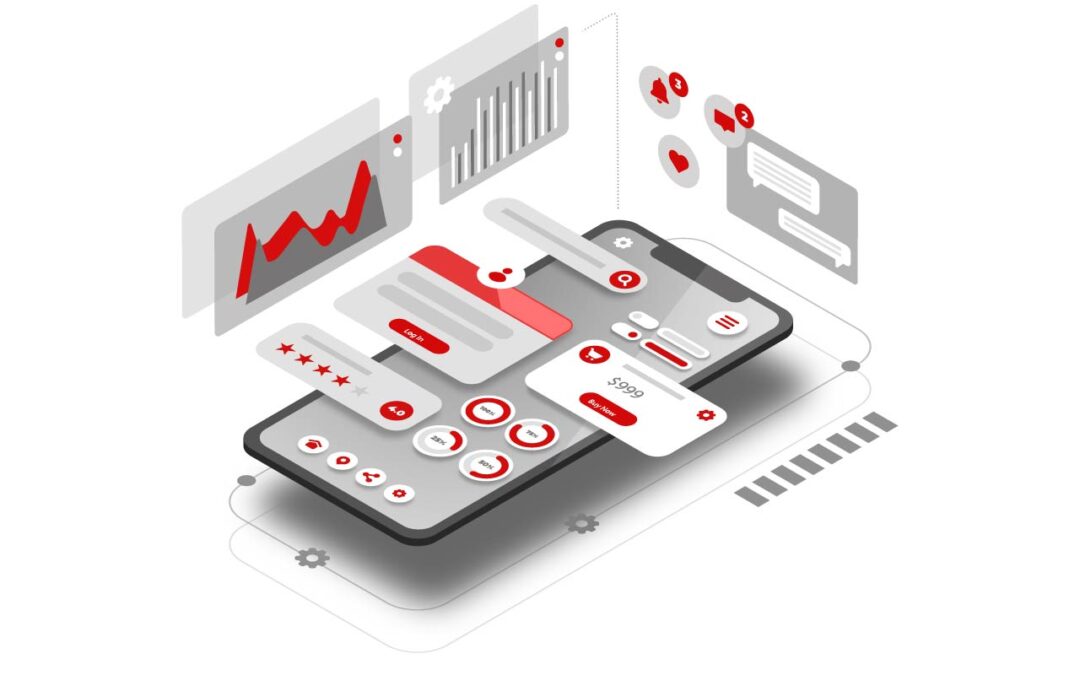What is eCommerce UX Research?

Most often the terms like web design and web development are used with fire at will. In a general and broad sense, that is okay. But when we are discussing UX, the lines must be drawn. The term UX is an abbreviated version of ‘User Experience’. In the realm of websites or apps, UX refers to the friendliness of a website/app as experienced by its users.
In the case of eCommerce websites/apps, the efforts of UX are focused on making the digital platforms both user-friendly and customer-oriented. The logic is very simple and it is that you are making a website/app that is for users who are also your customers. So, you have to think not only in terms of general user-friendliness but also align it with the perspective and priorities of consumer behaviour.
ECommerce websites and apps are intended for use by existing and potential customers. Their priorities and prerogatives must be taken into consideration in web/app design and development. The UX determines how easily customers are able to navigate, spot the relevant tabs, interlinking elements, etc. If the UX is not up to the expectations of customers, it would be understandable if they close the site/app and halt their shopping journey.
UX research in eCommerce is an effort to find out how to make an eCommerce website/app easy to use for customers in the progress and completion of their shopping journeys. The inputs and insights gained are then used in the design and development of shopping websites and apps.
We can use the example of the Amazon shopping website here. It is probably one of the best in the world when it comes to user experience. The search bar at the top helps users spot it quickly and search for what they are looking for. On the search result page, users can further refine their search to find more accurate products. The content of the top bar remains fixed and hosts important tabs like account management, shopping cart, language change, etc. We are so accustomed to these UX features that they may not look anything unique. But it is simplicity that works with UX.
Carrying out UX Research for eCommerce
Study and Analysis of Competitors’ Websites
Studying the sites/apps of other players in the market provides a first-hand perspective of the UX levels maintained and some glance into customers’ expectations. There is always an option to use default website formats offered by many service providers. But to get a taste of how things really are in the market, it is a good practice to check out operational sites/apps. It also provides a window to gauge the contemporary standards prevailing in the industry.
There could be many players in a given market. So, how to select which brands’ websites/apps to be studied? The answer is choosing your direct competitors. Why direct competitors? This is because of the common customer base. How your direct competitors are providing UX could provide meaningful inputs for your UX efforts for the same set of the target audience. Also, these are the websites/apps against which yours are likely to be compared by customers.
Now, how to study an eCommerce website/app from a UX perspective? There are no strict rules for this. But certain practices hold up. Form a team with relevant experience and expertise that would study and share feedback. Ask them to carry out a SWOT analysis on a given set of parameters while keeping the option of open feedback. Some of the parameters are listed ahead in this blog under ‘focus elements in an eCommerce website/app’. Additional parameters may be used as deemed fit. Repeat the same exercise for a few more brands. What you will have in the end is a fair perspective of what to do and what not to do in terms of user experience. You can also go for external assistance from an experienced team of market research consultants.
Define your eCommerce UX Strategy
ECommerce UX strategy is a set of policies and tactics deployed in an eCommerce website/app towards elevating the browsing and shopping experience of customers on these digital platforms. A lot of things make candidature when we talk about ‘elevating customer experience’ over an eCommerce shopping website or app. It could be ease of navigation, easy visibility of texts and tabs, use of pleasant combinations of colours, fixed and variable components, the structure of content, etc. It is a wide-open world for trying creative ideas but without losing the essence.
By going for UX strategies, you would be putting users/customers as the focal point in the design of your digital store i.e. your eCommerce site/app. It allows you to align your CX strategies with your brand’s digital shopping platforms. There arises the option to implement your branding objectives in a curated manner. You could put in place measurable elements within your website/app for analytics. And also, by having a plan or a strategy, your digital marketing team will have something to look up to and maintain.
An overwhelming majority of customers make up their minds about the credibility of a brand simply based on its app/website design. As retail and eCommerce consultants with more than 10 years of experience in this domain, we have witnessed so many times that a high bounce rate has strong correlations with a poor website design. Only a small fraction of customers return to a website with poor UX features. Slow loading time and lack of mobile-compatibility are two other turn-offs for online customers. These points should be kept at the forefront when formulating UX strategies.
Focus Elements in an eCommerce Website/App
Here is a list of elements of an eCommerce website/application that every brand should focus on. It is not an exhaustive list but covers a wide range of areas.
|
Discovery Touchpoints
Shopping Touchpoints
Product Touchpoints
|
Transactional Touchpoints
Footer Touchpoints
|
Ecommerce UX research is not absolute by itself. It relies on inputs from other eCommerce market research elements.
- ECommerce Competitor Research
- ECommerce Customer Research
- ECommerce Pricing Research
- ECommerce Demand Research
- ECommerce Keyword Research
Key Takeaways
ECommerce shopping websites and apps are for use by customers. At no point could their priorities and prerogatives be ignored in web/app design and development. And the UX efforts determine the alignment of an eCommerce website/app with its users-customers. If the UX is not up to the suitability or expectations of customers, they might close the site/app and halt their shopping journey within a matter of seconds.
In UX research, a good place to start would be to know how your direct competitors are doing in terms of UX. Because the target audience is the same, this awareness could provide meaningful inputs for your UX efforts.
Formulating eCommerce UX strategies is a wide-open world for ingenuity and innovation. But the essence must not be lost, which is to elevate the browsing and shopping experience of customers on digital shopping platforms strategically and objectively.
How can we help you?
For service-related enquiries on our retail and eCommerce market research services. To have a quick dialogue with one of our market research consultants please drop us a message on our website and we shall connect with you at the earliest.
Found this blog worth Reading?
If you liked this blog, please visit our blog section and YouTube channel for regular updates and insights on the retail and eCommerce industry.











